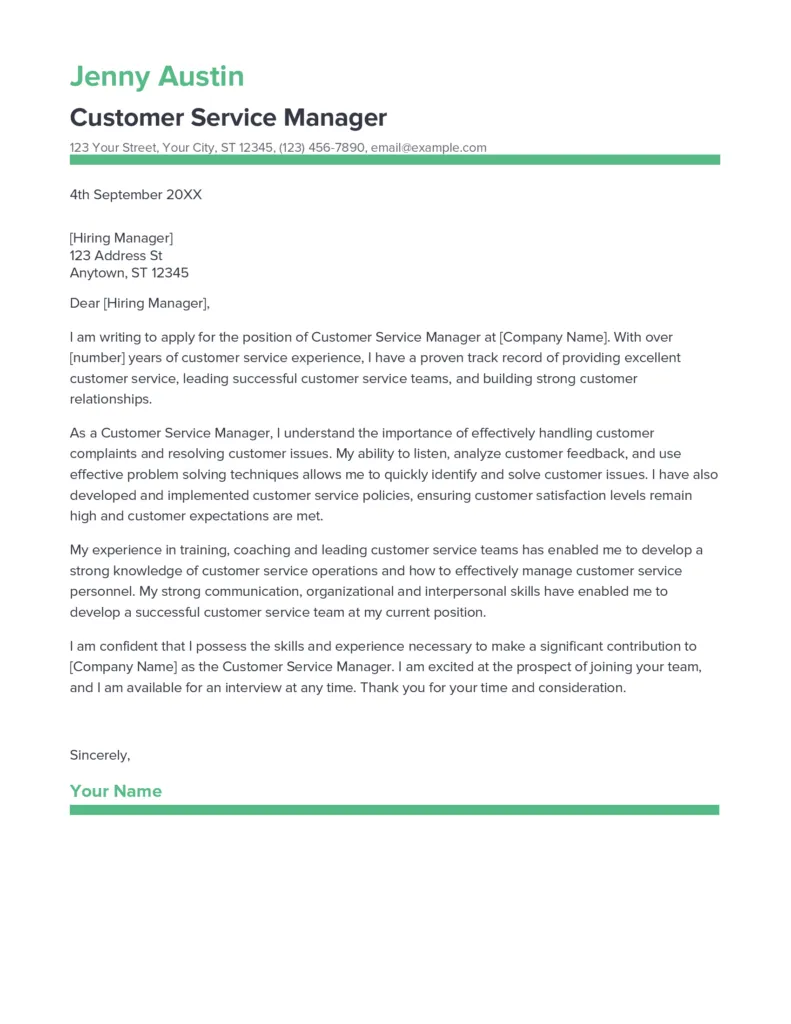Understanding the Importance of a Cover Letter
A cover letter is a critical component of your job application, often serving as the first impression you make on a potential employer. Unlike your resume, which provides a snapshot of your skills and experience, a cover letter allows you to tell your story, express your enthusiasm, and demonstrate why you are the perfect fit for the specific role and company. It’s an opportunity to showcase your personality, communication skills, and understanding of the job requirements. A well-crafted cover letter can significantly increase your chances of getting an interview, while a poorly written one can lead to your application being overlooked. In today’s competitive job market, a strong cover letter is no longer optional; it’s essential.
Why Cover Letters Matter for Customer Service Managers
For customer service manager roles, a cover letter is especially crucial. This is because customer service is all about communication, empathy, and problem-solving. Your cover letter provides a platform to demonstrate these skills. It allows you to articulate your experience in handling customer issues, leading teams, and improving customer satisfaction. Furthermore, a cover letter tailored to a customer service manager position allows you to highlight your understanding of customer service principles, such as active listening, conflict resolution, and building rapport. It’s also an ideal space to express your leadership style and how you motivate and train your team to deliver exceptional service. A well-written cover letter can set you apart from other candidates.
Key Elements of a Compelling Cover Letter
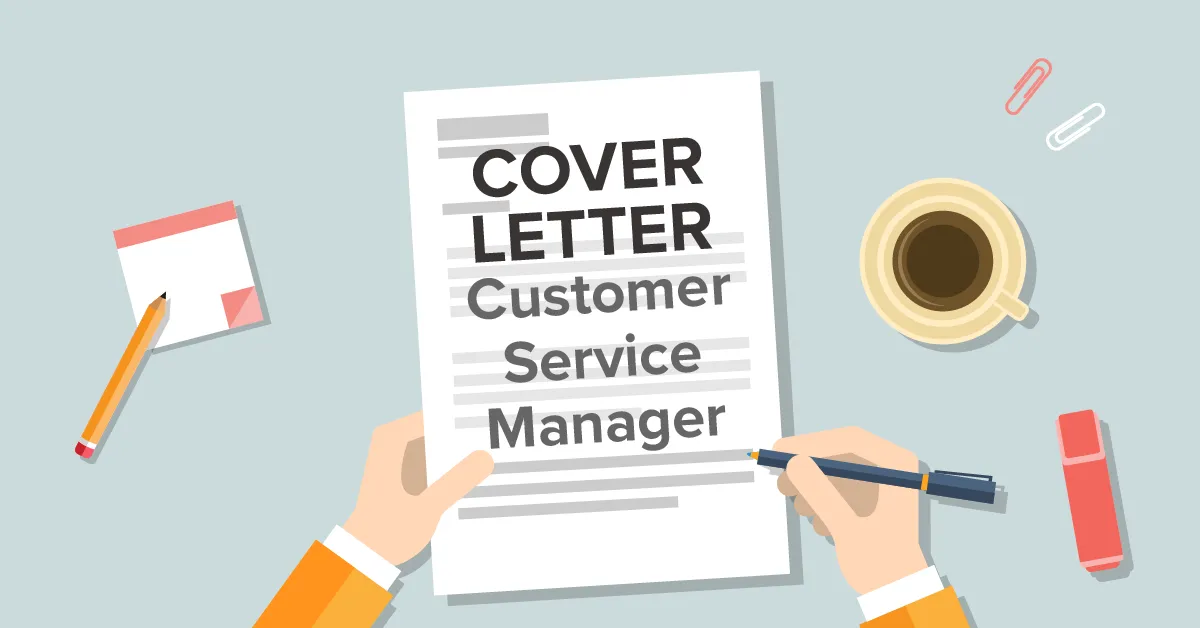
A compelling cover letter includes several key elements designed to grab the hiring manager’s attention and convince them to read your resume. The structure includes a header, opening, body paragraphs, and a closing section. Each section plays a vital role in showcasing your qualifications and personality. The header should include your contact information. The opening should state the position you’re applying for and how you heard about it, followed by an enthusiastic statement about why you’re interested in the role. Body paragraphs are where you highlight relevant skills and experience, quantify your achievements, and demonstrate your customer service expertise. The closing should reiterate your interest and include a call to action, like requesting an interview. Each element must be thoughtfully written and strategically placed.
Header Section
The header is the first thing the hiring manager will see. It’s essential to ensure it’s well-formatted and includes all necessary contact information. Include your full name, professional email address, phone number, and optionally, your LinkedIn profile URL. Use a clear and professional font, and ensure all information is accurate and up-to-date. A clean and organized header immediately conveys professionalism and attention to detail. This section is where you provide the essential details for the hiring manager to reach you. This prevents any delays in the process and streamlines the recruitment process.
Contact Information
Your contact information must be readily available and easy to read. Place your name at the top, followed by your email address, phone number, and LinkedIn profile URL (optional but recommended). Use a professional-sounding email address, and double-check the phone number for accuracy. Ensure your LinkedIn profile is updated and reflects your professional experience and skills. This makes it easy for the hiring manager to reach you if they are interested in your profile. Avoid using nicknames or unprofessional email addresses. Keeping this information in a standard format is key for clarity.
Date
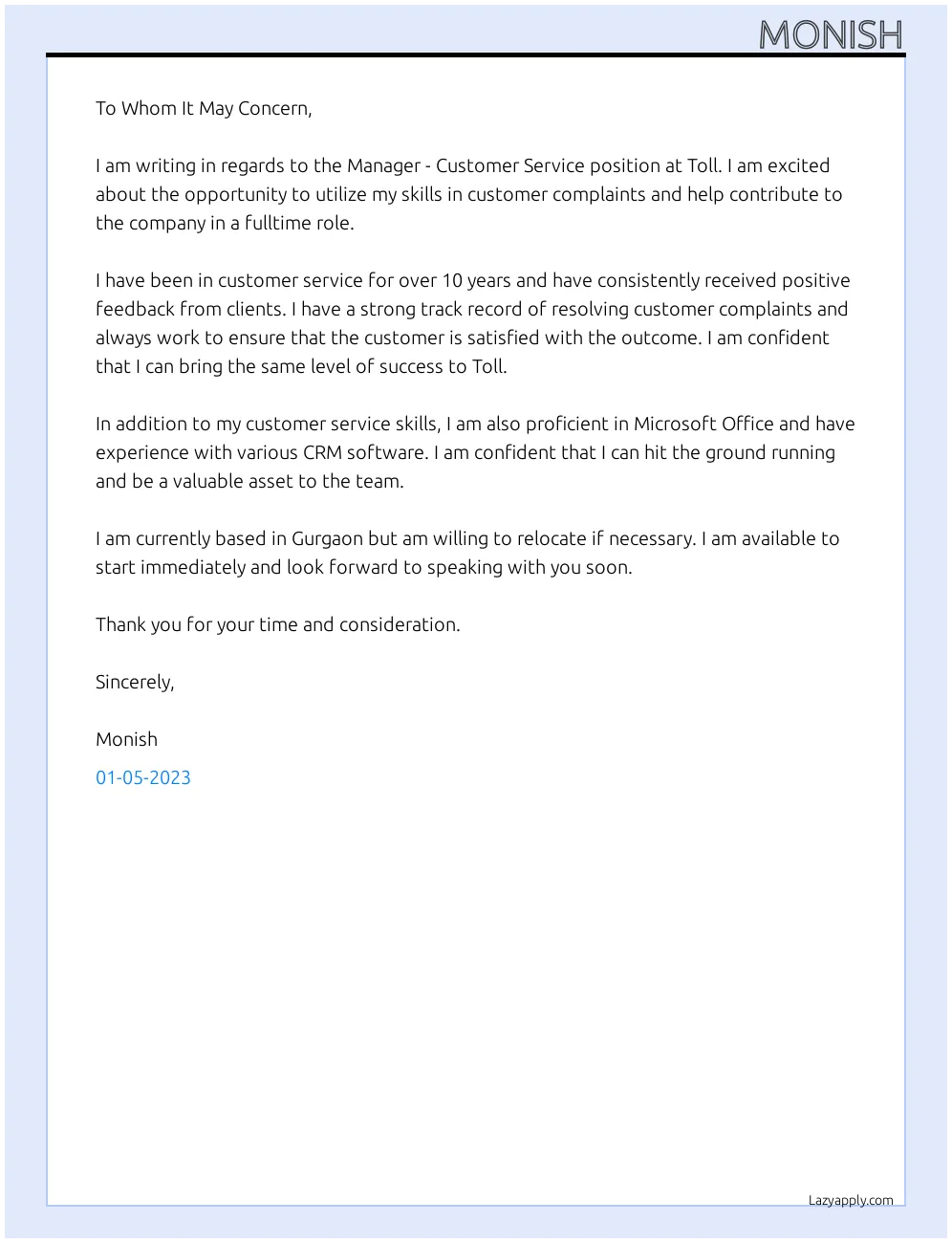
The date is another small but essential detail. It indicates when the cover letter was written. Place the date directly below your contact information, left-aligned. Use the standard format, such as Month, Day, Year (e.g., December 1, 2024). Make sure the date is current and reflects when you are sending your application. Including the date shows that you’ve tailored the letter to a recent job posting and that your information is up-to-date. The date also adds a sense of formality to your application.
Recipient’s Information
Directly below the date, include the recipient’s information. This should include the hiring manager’s name and title (if known), the company name, and the company’s address. If you can’t find the hiring manager’s name, use a general greeting like ‘Dear Hiring Manager.’ Always try to find the hiring manager’s name, as it makes your application more personalized. Address the recipient formally. Using the correct information shows that you’ve done your research and are genuinely interested in the position. It is very important to check this carefully before sending it.
Opening Section Crafting a Powerful Start
The opening section is your first chance to capture the reader’s attention. Your goal should be to make a positive first impression and encourage the hiring manager to read further. Start with a strong opening paragraph that clearly states the position you’re applying for and where you found the job posting. This can be a website, a job board, or a referral. Follow this with a brief statement expressing your enthusiasm for the role and the company. Keep it concise and focused on why you’re interested. The opening should immediately tell the reader why you are interested in this particular opportunity and what makes you unique.
Address the Hiring Manager by Name
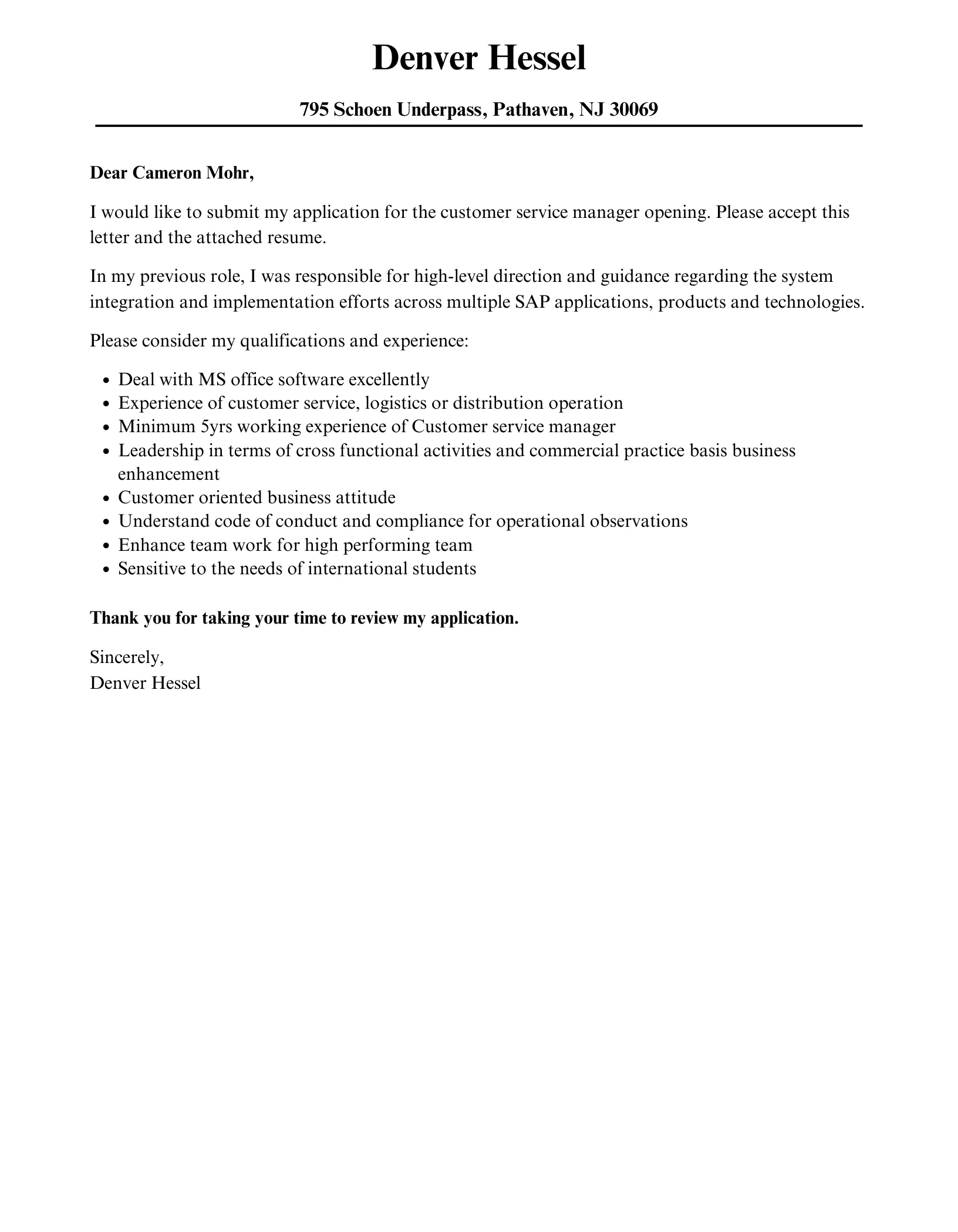
Whenever possible, address the hiring manager by name. This personal touch immediately makes your cover letter more engaging and shows that you’ve taken the time to research the company and the individual. If you don’t know the hiring manager’s name, use a general greeting like ‘Dear Hiring Manager.’ However, always try to find the name through the company website, LinkedIn, or by contacting the HR department. Addressing the letter to a specific person gives the impression of personal attention and makes your application stand out. It makes your cover letter more memorable and shows your proactive approach.
Express Enthusiasm and Highlight Your Intent
In your opening paragraph, express your enthusiasm for the role and clearly state your intent. Briefly mention why you’re excited about the opportunity and the company. Show that you’ve researched the company and understand its mission, values, and culture. Then, highlight your key skills and experiences that align with the job requirements. This allows the hiring manager to quickly understand why you are a good fit for the role. Your goal is to create a sense of curiosity and encourage them to continue reading the rest of the cover letter. The tone should be professional and confident.
Body Paragraphs Showcasing Your Skills
The body paragraphs are where you elaborate on your skills, experience, and achievements. These paragraphs are the heart of your cover letter, where you persuade the hiring manager that you are the best candidate. Focus on relevant skills and experiences that directly relate to the job requirements. Use specific examples to illustrate your abilities and quantify your achievements with data. This could involve improving customer satisfaction scores, reducing customer complaints, or leading a team to meet or exceed targets. The main idea here is to show how you have excelled in previous roles and how you can contribute to the new company’s success.
Highlight Relevant Skills and Experience

In the body paragraphs, focus on highlighting the skills and experiences that align with the job description. Identify the key requirements and match them with your relevant qualifications. Discuss your experience in customer service, leadership, problem-solving, conflict resolution, and communication. Provide examples of how you’ve successfully applied these skills in previous roles. For example, describe how you’ve trained and mentored customer service teams, resolved difficult customer issues, and improved customer satisfaction ratings. Use action verbs to describe your accomplishments and experiences. Focus on the most relevant skills as it is very important for the reader.
Quantify Achievements with Data
Quantifying your achievements with data is essential. Instead of just stating that you improved customer satisfaction, provide specific metrics. For example, ‘Increased customer satisfaction scores by 15% in six months.’ Mention how you improved first call resolution rates, reduced customer complaints by a certain percentage, or exceeded sales targets. Using numbers to support your claims makes your accomplishments more credible and impactful. Data-driven results show that you understand how to measure success and deliver tangible results. It also demonstrates your analytical and problem-solving abilities.
Showcase Your Customer Service Expertise
Customer service expertise is central to this role. In your cover letter, emphasize your ability to lead and motivate a customer service team. Describe your experience in training, coaching, and developing team members to provide exceptional customer service. Talk about your experience in handling escalated issues, resolving complaints, and building rapport with customers. Showcase your understanding of customer service principles, such as active listening, empathy, and conflict resolution. Mention any customer service software, CRM systems, or other tools you’re familiar with. This expertise helps to make your application stronger and more valuable.
Closing Section Leaving a Lasting Impression
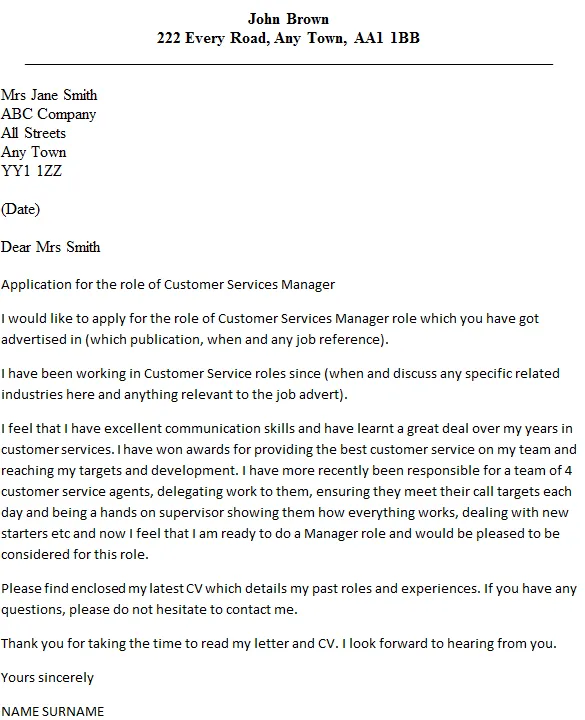
The closing section is your final opportunity to make a positive impression. This section should reiterate your interest in the position and the company, and include a clear call to action. Express your gratitude for the hiring manager’s time and consideration. The closing statement should be concise, confident, and leave the reader with a strong sense of your enthusiasm and qualifications. It should also highlight what you can bring to the company and why you’re the ideal candidate. A well-written closing can significantly increase your chances of getting an interview.
Reiterate Your Interest and Call to Action
Reiterate your strong interest in the position and express your enthusiasm for the opportunity. Reaffirm why you’re excited about the role and the company. Include a clear call to action, such as stating that you’re eager to discuss your qualifications in an interview. It is a good practice to mention your availability for an interview. Make it easy for the hiring manager to take the next step by providing a clear call to action. Expressing your availability demonstrates your proactive approach and shows that you’re serious about the opportunity. This also allows the hiring manager to know how to proceed.
Formal Closing and Signature
End your cover letter with a formal closing, such as ‘Sincerely’ or ‘Best regards.’ Leave a few blank lines for your signature. If you’re sending an electronic cover letter, type your full name below the closing. Ensure your signature is legible and professional. It is very important to maintain a professional tone throughout the entire cover letter. A proper closing and signature add a professional touch to your cover letter. The tone must be professional and appropriate for the job application. This also makes a final positive impression.
Proofreading and Formatting Ensuring Perfection
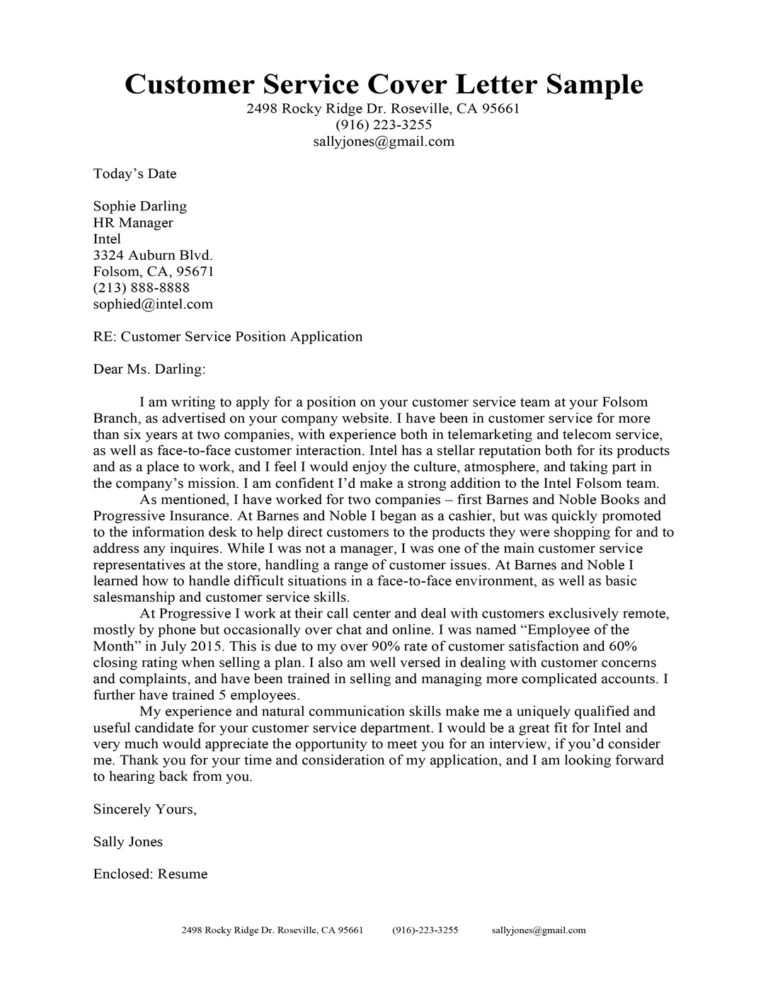
Proofreading and formatting are crucial steps in creating a flawless cover letter. These steps demonstrate your attention to detail and professionalism. Carefully review your cover letter for any grammatical errors, spelling mistakes, or typos. Ensure the formatting is clean, consistent, and easy to read. A well-formatted cover letter is more likely to be read and appreciated by the hiring manager. Before sending, consider getting a second pair of eyes to review your cover letter to catch any mistakes you might have missed.
Proofread for Grammar and Spelling Errors
Proofreading is essential to ensure your cover letter is free of grammatical errors, spelling mistakes, and typos. These errors can undermine your credibility and make you appear unprofessional. Use a grammar checker and spell-check tool to identify and correct mistakes. Carefully review your cover letter multiple times, paying attention to sentence structure, punctuation, and word choice. Read the letter aloud to catch any awkward phrasing or mistakes. Even the smallest error can make a negative impression. Proofread carefully because it is a critical step in the application process. This step shows that you pay attention to detail.
Choose a Professional Font and Format
Choose a professional and easy-to-read font, such as Times New Roman, Arial, or Calibri. Use a font size between 11 and 12 points. Ensure your cover letter is formatted with clear margins, consistent spacing, and proper alignment. Use bolding or underlining sparingly to highlight key information. Avoid using excessive colors, graphics, or unusual fonts, as these can distract from the content. The focus should be on the content and not the appearance. A well-formatted cover letter is more readable and shows that you are meticulous and organized. Check the format before sending the letter.
Tailoring Your Cover Letter
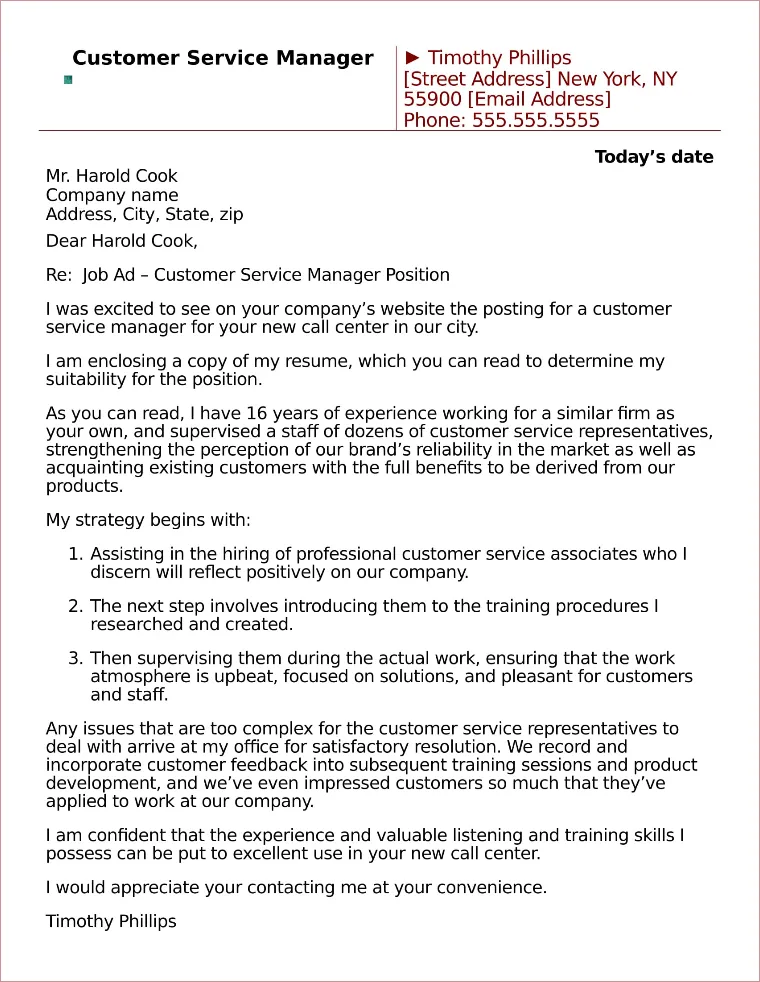
Tailoring your cover letter for each job application is critical. Generic cover letters are often overlooked, so it is very important to customize each cover letter to match the specific requirements of the job. Start by carefully reviewing the job description and identifying the key skills, experiences, and qualifications the employer is seeking. Then, highlight how your skills and experience align with these requirements. Use the same keywords and phrases as the job description and include specific examples to support your claims. This makes your cover letter more relevant and shows that you understand the role and the company.
Customizing for Specific Job Requirements
To customize your cover letter, carefully review the job description. Identify the key requirements and highlight how your skills and experiences match them. Modify your cover letter to include specific examples that showcase your relevant experience. Use the same keywords and phrases that are used in the job description to demonstrate that you understand the role and requirements. Tailor the letter to the specific company and their values. Tailoring your cover letter ensures that your application aligns with the job requirements, increasing your chances of success. Customize each cover letter for each company you are applying for.
